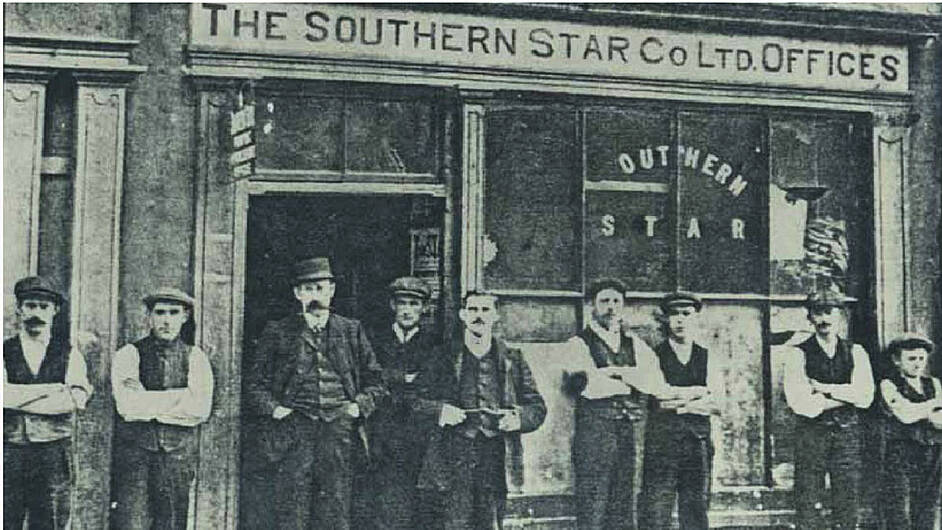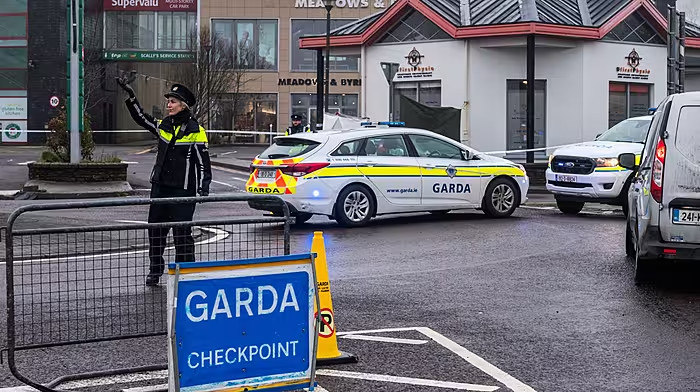Irish newspapers played a key role in shaping and reflecting public opinion during the Irish Revolution between 1910 and 1923. West Cork’s papers were no exception and, in a new book, historian Alan McCarthy takes a closer look at both The Southern Star and now defunct Skibbereen Eagle during that time
WHILE continuing to beam brightly today, it was in 1889 when the Southern Star first cast its light across West Cork upon its foundation by brothers John and Florence O’Sullivan.
In the ensuing 131 years, the paper has witnessed and recorded many moments of triumph and despair, moments of despair, being particularly prominent recently.
As the old adage states, however, ‘this too shall pass’ and now might be a good time to reflect on another tumultuous era during the Southern Star’s history – the Irish revolutionary period, 1910-1923, when it seemed unlikely that the paper would survive.
Having been founded in 1889, the Skibbereen weekly was purchased in 1891 by a consortium led by Monsignor John O’Leary of Clonakilty.
Of course, the ‘elephant in the room’, so to speak, was the existence in Skibbereen of another weekly paper that had been published since 1858: the Skibbereen Eagle.
The historian John T Collins wrote in the pages of this very newspaper in 1961 that, despite their different associations, ‘one farmer took the Eagle and his neighbour the Star, and they swapped papers on a Sunday evening.’
 A photograph of Michael Collins which would have appeared in his bi-lingual election manifesto, which was printed by The Southern Star, where Michael was a shareholder at the time.
A photograph of Michael Collins which would have appeared in his bi-lingual election manifesto, which was printed by The Southern Star, where Michael was a shareholder at the time.
From 1910 onwards the rivalry between the papers became increasingly bitter. In 1920, the solicitor DB O’Sullivan stated the Southern Star ‘makes its livelihood by tilting at the Eagle and the Eagle tilting back at it.’
While both the Southern Star and Skibbereen Eagle supported recruitment for the Great War, reflecting the views of the political parties they championed, the year 1916 witnessed further division and divergence between the two.
The Eagle became increasingly opposed to the republican movement and adopted a loyalist position during the War of Independence and Civil War. By 1917, the ‘practically bankrupt’ Southern Star was purchased by Sinn Féin, who transformed it into a staunchly republican paper.
This acquisition resulted in a host of prominent republican figures becoming attached to the Star, including office manager Seamus O’Brien who later married Nora Connolly, daughter of executed Rising leader James Connolly. Unsurprisingly, the Southern Star supported the republican movement before and during the War of Independence. Despite the Southern Star being supressed in the run-up to the pivotal General Election of 1918, its preference was clear: Seán Hayes, editor, was contesting the seat for Cork West, while Thomas Healy, a solicitor and later director at the paper, served as election agent for Michael Collins’ campaign to win the Cork South constituency. The Star also printed the bi-lingual election manifesto of its shareholder Collins.
As a result of its political affiliations, the Southern Star was suppressed a number of times by the British administration during this period. The paper was suppressed for the first time in 1916 while its longest period of suppression lasted from August 1918 to April 1919.
Having finally been allowed to return to print, the paper was suppressed again from October 1919 to March 1920. The paper’s position during the Civil War was far more conflicted.
JB O’Driscoll wrote that ‘like many a family, the directors were divided – three in favour of the Treaty, two against.’ Without being critical of Anti-Treatyites the paper hoped ‘to point out in a clear unmistakable way the advantages of the treaty.’ While the Star survived its frequent suppressions during this period, its erstwhile rival for 33 years, the Skibbereen Eagle, wasn’t so fortunate.
Having shut its doors in 1922, a failed relaunch in 1926 ultimately ended in the Star buying out and absorbing the Eagle in 1929, with the emblem of the Eagle still included in the Southern Star’s masthead today.

• Dr Alan McCarthy is a historian of the Irish revolutionary period. He previously worked as a tour guide and museum assistant at Michael Collins House in Clonakilty and is currently travelling around Australia with his girlfriend Sarah. He is the author of Newspapers and Journalism in Cork, 1910-23: Press, Politics and Revolution, published by Four Courts Press and available now online and in all good bookshops.







